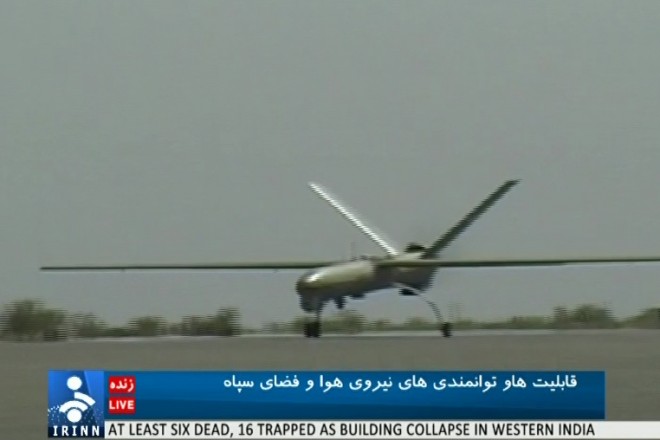In an apparent reaction to the recently concluded multinational minesweeping exercise in the Persian Gulf and Iranian President Mahmoud Ahmadinejad’s appearance before the United Nations, Iran released film and video of its latest unmanned aerial system (UAS). Iran calls the new UAS Shahed-129 (or Witness-129). The Guardian news website provided the following transcript of Iranian television coverage of the Shahed-129 flight demonstration: “The new drone . . . can carry out combat and reconnaissance missions with its 24-hour non-stop flight capability.” The transcript goes on to report, “home-made aircraft is capable of hitting targets at a distance of 1,700-2,000 kilometers… [and] can be equipped with electronic and communication systems including cameras which can capture and send live images.”

While the Shahed-129’s flight performance claims may be exaggerated, the system nonetheless will join several other indigenously manufactured Iranian unmanned aircraft. For U.S. sailors operating in the Persian Gulf sightings of Iranian-built drones are a common. The fact is, Iran has been manufacturing reconnaissance drones since the 1980s, when they began building and flying the Mohajer systems during the Iran-Iraq War. The Mohajer was followed by a line of indigenously built systems such as the mass produced Ababil. The smaller Ababil UAS has been exported to Hezbollah forces, who used it against Israel in the 2006 conflict in southern Lebanon. More recent reports indicate that Syrian government forces may be using this system to locate and target rebel forces in Syria. The Ababil also made headlines in February 2009 when an Iranian controlled drone was shot down by a US F-16 after making an incursion into Iraqi airspace. So clearly then the, Shahed-129 is just the latest in a long line of Iranian built systems that Iran routinely operates. By all appearances, robotic systems have been part of the Islamic Republic of Iran’s military arsenal since the early days of the revolution.
Before any U.S. military planner or leader writes off this latest news flash from Iran as irrelevant bluster, it is important to recognize the more important fact that it represents: The robotics genie is out of the bottle. The resemblance of the U.S. Predator to the Shahed-129 is one more indication that U.S. forces are also subject to being observed, tracked and targeted by robotic systems. Dr. Peter Singer, author of Wired For War, elaborated on this point at the Naval War College’s 2012 Current Strategy Forum. “Right now in military robotics there are more than 50 other countries that are building, buying and using military robotic systems,” he said.
Singer explained the fantastic proliferation of robotic systems in recent years by noting that the U.S. began the war in Afghanistan with just a handful of UASs and no ground robotic systems. Eleven years later, the United States is employing approximately 7,000 air systems and more than 12,000 ground systems. While the U.S. may have an edge in quantity and quality of robotics, the adage that “sometimes good enough is excellent,” may be appropriate for an Iranian UAS system that is good enough to provide the rudimentary over-the-horizon targeting data for a shore-based anti-ship missile system. Iran has a capacity to build and operate these systems and they have experience using them in combat. Naval leaders and military planners are wise to keep a keen eye on and give due respect to the potential capabilities of Iranian and other foreign robotics systems.
Cmdr. Daniel Dolan is assigned to the Naval War College where he teaches Strategy and War and serves as the Deputy Manager of the Chief of Naval Operations Professional Reading Program. He is an EP-3/special mission P-3 Naval Flight Officer and frequent contributor to Proceedings.




